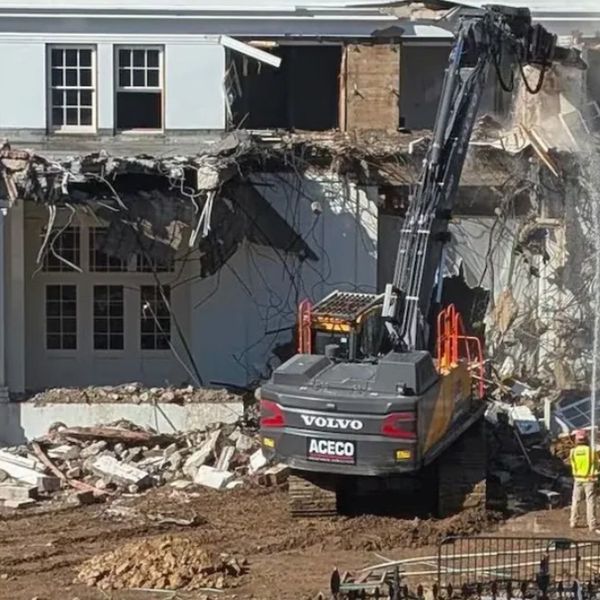In early June, 2009,
I was in the Shah Mansoor displaced persons camp in Pakistan, listening
to one resident detail the carnage which had spurred his
and his family's flight there a mere
15 days earlier. Their city, Mingora, had come under massive aerial
bombardment. He recalled harried efforts to bury corpses found
on the roadside even as he and his neighbors tried to organize their
families to flee the area.
"They were killing us in
that way, there," my friend said. Then, gesturing to the rows of tents
stretching as far as the eye could see, he added, "Now, in this way,
here."
The people in the tent encampment
suffered very harsh conditions. They were sleeping on the ground without
mats, they lacked water for bathing, the tents were unbearably hot,
and they had no idea whether their homes and shops in Mingora were still
standing. But, the suffering they faced had only just begun.
UN humanitarian envoy Abdul
Aziz Arrukban warned on June 22nd that the millions of Pakistanis
displaced during the military's offensive against the Swat Valley
would "die slowly"
unless the international community started taking notice of the "unprecedented"
scope of the crisis. (Jason Ditz, Anti-War.com)
UN agencies and NGOs such as
Islamic Relief and Relief International
report that many of the persons now living in tent encampments, or squatting
in abandoned buildings, or crowded into schools
designated as refugee centers, may soon start dying from preventable
disease.
Health teams note increasingly
frequent cases of diarrhea, scabies and
malaria, all deadly in these circumstances, especially for young children.
With so many people living so close to each other, these diseases are
spreading fast.
Relief groups are concerned
that as the monsoon season approaches, in July, these problems will
get considerably worse. Monsoons bring regional floods and cause escalating
rates of malaria and waterborne diseases. The impact, this year, is
expected to be much more severe because so many people are living in
crowded and unsanitary conditions.
Pakistan's already
rundown health care system, officials report, is now
near collapse. Hospitals in northern Pakistan have been overwhelmed,
with exhausted doctors, depleted medicine supplies and avalanches
of red tape blocking money and medicine for the crisis.
Writing for the Associated
Press on June 7th, Kathy Gannon described the men's ward
in the Mardan District Hospital: "30 steel beds lie crammed together,
with two-inch mattresses and no pillows. Pools of urine spread on the
floor, and fresh blood stains the ripped bedding...The one bathroom
for 30 patients stinks of urine and faeces. The toilets are overflowing,
the door to one cement cubicle is falling off and a two-inch river of
urine covers the cement floor. In one corner, garbage is piled high."
The annual budget for health
care in Pakistan, this year, is less than $150 million, while Pakistan's
defense budget last year came to $3.45 billion, and is expected to reach
$3.65 billion next year.
People in Shah Mansoor worry
that the international community as well as their own government won't
notice the health care crisis they face. But villagers yet to
flee their homes in Waziristan agonize
under constant military scrutiny from
lethally-armed U.S. surveillance drones.
A villager who survived a drone
attack in North Waziristan explained that even the children, at play,
were acutely conscious of drones flying overhead. After a drone attack,
survivors trying to bring injured victims to a hospital were dumbfounded
when a driver stopped, learned of their plight and then sped away. Then
it dawned on them that the driver was afraid the drone would still be
prowling overhead and that he might be targeted for associating with
victims of the attack.
The U.S. drone aircraft can
see Pakistan - their pilots in air-conditioned Nevada trailers see the
terrain even though they are physically thousands of miles away.
Writing about U.S. Air Force
efforts to "meet the voracious need for unmanned aircraft surveillance
in combat zones," Grace Jean notes, in the June, 2009 issue of National
Defense Magazine, that the Air Force's 432nd Air Expeditionary Wing,
at Creech Air Force Base in Nevada, is expanding base operations.
"We have 34 video feeds over the battlefield right now," says Col.
John Montgomery, the wing's vice commander. When operating a drone,
Montgomery says, "You are part of the battlefield." Commenting on
the hundreds of combat sorties he flew over Sadr City, in Baghdad, Montgomery
said he even knew where people hung out the laundry and when they took
out the trash. "I knew the traffic flow for the hours that I
could see, and when that changed, I knew it. Once you know the patterns
of life, when things are different or odd, that means something's
up, and that gives the battlefield commander, the joint commander on
the ground, a heads up."
On Tuesday, June 23rd, U.S. drones launched
an attack on a compound in South Waziristan.
Locals rushed to the scene to rescue survivors. The U.S. drone
then launched more missiles at them, leaving a total of 13 dead. The
next day, local people were involved in a funeral procession when the
U.S. struck again. Reuters reported that 70 of the mourners were killed.
Drone operators and their commanders
at Creech Air Force Base will become increasingly well informed about
the movements of Pakistani people, but meanwhile the U.S. people will
have lost sight of war's human costs in Pakistan.
Now, we're hearing of imminent army operations in South Waziristan
that have already forced about 45,000 people to flee the
region, joining about two million men, women, and children displaced
by fighting in the Swat Valley and
other areas. People from Waziristan who flee from their villages, trying
to save their lives, trying not to be seen by the omnipresent drones,
will likely join the unseen, the displaced people whose lives and hopes
escape international notice as they die slowly.
President Obama has taken us
into an expansion of Bush's war on terror, presumably guided by the
rationale that his administration is responsible to root out Al Qaeda
terrorists. But the methods used by U.S. and Pakistani military
forces, expelling millions of people from their homes, failing to provide
food and shelter for those who are displaced, and using overwhelmingly
superior weapon technology to attack innocent civilians, -- these methods
will continue creating terrorist resisters, not defeating them.
If we want to counter Al-Qaeda,
if we want to be safe from further terrorist attacks, we'd do well to
remember that even when we don't recognize the humanity of people
bearing the brunt of our wars, these very people have eyes to see and
ears to hear. They must be asking themselves, who are the terrorists?

